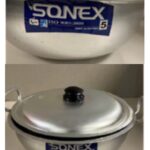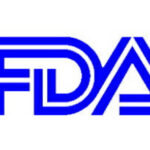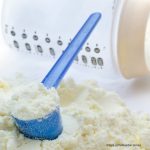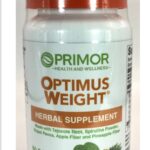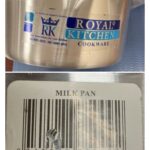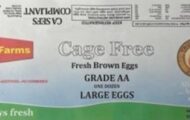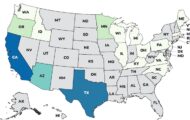More cookware has been found that can leach lead, according to the FDA. Since the last update on October 15, 2025, 11 more types have been identified. There are no FDA regulations that authorize lead for use as a color additive or food additive, including as a component of food ware, cookware, or food contact surfaces. There is no safe level of lead consumption. This heavy metal is toxic and can affect people of any age or health status. Children who are exposed to lead may have trouble learning, lowered IQ, and behavior changes. Higher levels of lead exposure can cause fatigue, headache, stomach pain, vomiting, or neurological changes in anyone. The recalled products include 3B Cookware Aluminum Deg Style Patina #4. The retailer is India's Fine Foods, Inc., located at 869 Stillwater … [Read more...]
FDA Seizes 7-OH Opioids in Missouri to Protect Consumers
The FDA has seized 7-OH opioids in Missouri to protect consumers. The U.S. Marshals Service took about 73,000 units of 7-hydroxymitragynine (7-OH) products that are valued at roughly $1 million from three firms in that state. The firms were not named. The seizure included foods and dietary supplement products, including liquid shots and tablets, that contain concentrated 7-OH as an ingredient. This ingredient is recognized as having potential for abuse because it binds to opioid receptors. It can't be legally added to supplements or conventional foods. The FDA has not approved 7-OH for medical use and it does not meet safety standards. The FDA worked with the Missouri Department of Health and Senior services in this enforcement action. In July 2025, the FDA recommended the … [Read more...]
FDA Warned ByHeart About Insanitary Conditions Two Years Ago
The FDA warned ByHeart about insanitary conditions in their facility more than two years ago during the worry about Cronobacter in infant formula. A warning letter was sent on August 30, 2023. The letter states, "During our inspection at the (b)(4) facility, FDA investigators found significant violations of Title 21, Code of Federal Regulations, Part 106 (21 C.F.R. Part 106), Infant Formula Requirements Pertaining to Current Good Manufacturing Practice, Quality Control Procedures, Quality Factors, Records and Reports, and Notifications (“the Infant Formula Rule”)." This information is interesting because powdered ByHeart Whole Nutrition Infant Formula is linked to a botulism outbreak that has sickened 15 infants in 12 states. The California Department of Health conducted testing on … [Read more...]
How Do You Know Your Infant Has a Botulism Infection?
Botulism is a serious and often fatal toxin; in fact, it is one of the most lethal toxins on the planet, according to the World Health Organization. A small amount can kill an adult. But not many people know that the symptoms of botulism infection in an infant are different from symptoms in adults and older children. How do you know your infant has a botulism infection? Clostridium botulinum is the bacteria that produces the botulism toxin. The bacteria produces spores to ensure its survival; the spores are heat-resistant with a protective coating. Under certain circumstances, mainly an anaerobic environment (one without oxygen) such as in canned foods, and when the pH of a food is above 4.6, such as in vegetables, the spores produce the toxin. Adults and older children can … [Read more...]
FDA Warns About Supplements That Contain Yellow Oleander
The FDA is warning consumers about dietary supplements that actually contain yellow oleander, a toxic plant. This plant can cause serious health problems and can be fatal when ingested. The supplements are labels as tejocote root or Brazil seed. Yellow oleander is a poisonous plant that is native to Mexico and Central America. Yellow oleander can cause neurologic, gastrointestinal, and cardiovascular adverse health effects that can be severe or fatal. Symptoms may include nausea, vomiting, dizziness, diarrhea, abdominal pain, changes in heart rhythm, arrhythmia, and more. You can see the long list of recalled supplements that contain yellow oleander at the FDA web site, along with where they were sold, if a recall was issued, and the firm that sold the products. Some of the … [Read more...]
CR Says Protein Powders and Shakes Have High Lead Levels
Consumer Reports says that more than 2/3 of the protein powders and shakes they tested have high lead levels. In fact, they have more lead in a single serving than is safe to consume in a day - some by more than 10 times. It's been 15 years since Consumer reports has teated protein powders and shakes. These products have become a huge business, driving supplement sales. But some have high levels of toxic heavy metals. Nearly all of the plant based products had elevated lead levels, but some were so bad that the experts caution against using them at all. A single serving of those powders had between 1,200 and 1,600% of the level of CR's concern per lead, which is 0.5 micrograms per day. That is the California Prop 65 maximum allowable dose level, which has a wide safety margin and … [Read more...]
FDA Says More Cookware May Leach Lead; Six Brands Added
FDA says more cookware may leach lead and six brands have been added to the list of products tested by that agency. Consumers should not use and retailers should not sell these products. The six new brands are in addition to four brands added at the beginning of this investigation. The recalled products include Kadai/Karahi Aluminum Hammered Kadai Size 7 sold at Indian Supermarket at 4421 Gateway Park Blvd. in Sacramento, California. The distributor is Indian Cookware & Appliance LLC at 3247 Reserve Court in San Jose, California. Distributor notification is in process. Also on the list is Brass Pot sold at Santos Agency at 1188 Montague Street in San Leandro, California. Distributor notification is in process. Dolphin Brand Aluminum Saucepan is on the list. The retailer is Al … [Read more...]
Live Avian Flu Can Survive in Raw Milk Cheese Up to Six Months
Live avian flu can survive in raw milk cheese up to six months, according to an article in the University of Minnesota's CIDRAP. The report was published in Nature Medicine on October 8, 2025. The research was conducted at Cornell University. Researchers at Cornell said in a statement, "Highly pathogenic avian influenza H5N1 viruses have recently spread to dairy cattle, with high levels of virus detected in milk from affected animals, raising concern about the risk posed by unpasteurized dairy products consumed by human." Raw milk cheeses can contain other pathogens, such as Salmonella and E. coli, but bird flu is something new. High levels of the virus has been detected in milk from affected animals. The H5N1 viral persistence was assessed in milk that was acidified to several … [Read more...]
FDA Releases Two New Tools in Foodborne Illness Investigations
The FDA has released two new tools in their foodborne illness investigations: EIS (Executive Incident Summary Abstracts) and FOOD (Foodborne Outbreak Overview of Data). The EIS will be released after an outbreak is over, providing high level information about the outbreak and any new information that may have been discovered since the investigation ended. FOOD is a comprehensive detailed report on product-pathogen pairs that have caused repeated outbreaks over the years. The EIS reports are written after the investigation into an FDA-regulated human food product is closed. The reports will be redacted to protect confidential information as well as personally identifiable information and other info that the Freedom of Information Act (FOIA) states is exempt from disclosure to the … [Read more...]
Cornell Researchers Find Deadly Bacteria in Raw Cat Food Brands
A study by Cornell researchers, published in the journal Nature, finds that there is deadly bacteria in raw cat food brands. The brands were not named. The researchers say that this is an issue because, "American consumers lack adequate education on the proper handling of foods, especially those intended to be served raw." The BARF diet (bone and raw food diet) is an attempt to return animal diets to ancestral roots. But these foods are contaminated with bacteria, viruses, and parasites, especially when compared to conventionally processed foods. While online groups say that this diet has benefits for pets, there is increased risk of illness for the animals and their owners. The study found Salmonella, Cronobacter, Clostridium perfringens, and E. coli bacteria in raw or partially … [Read more...]
